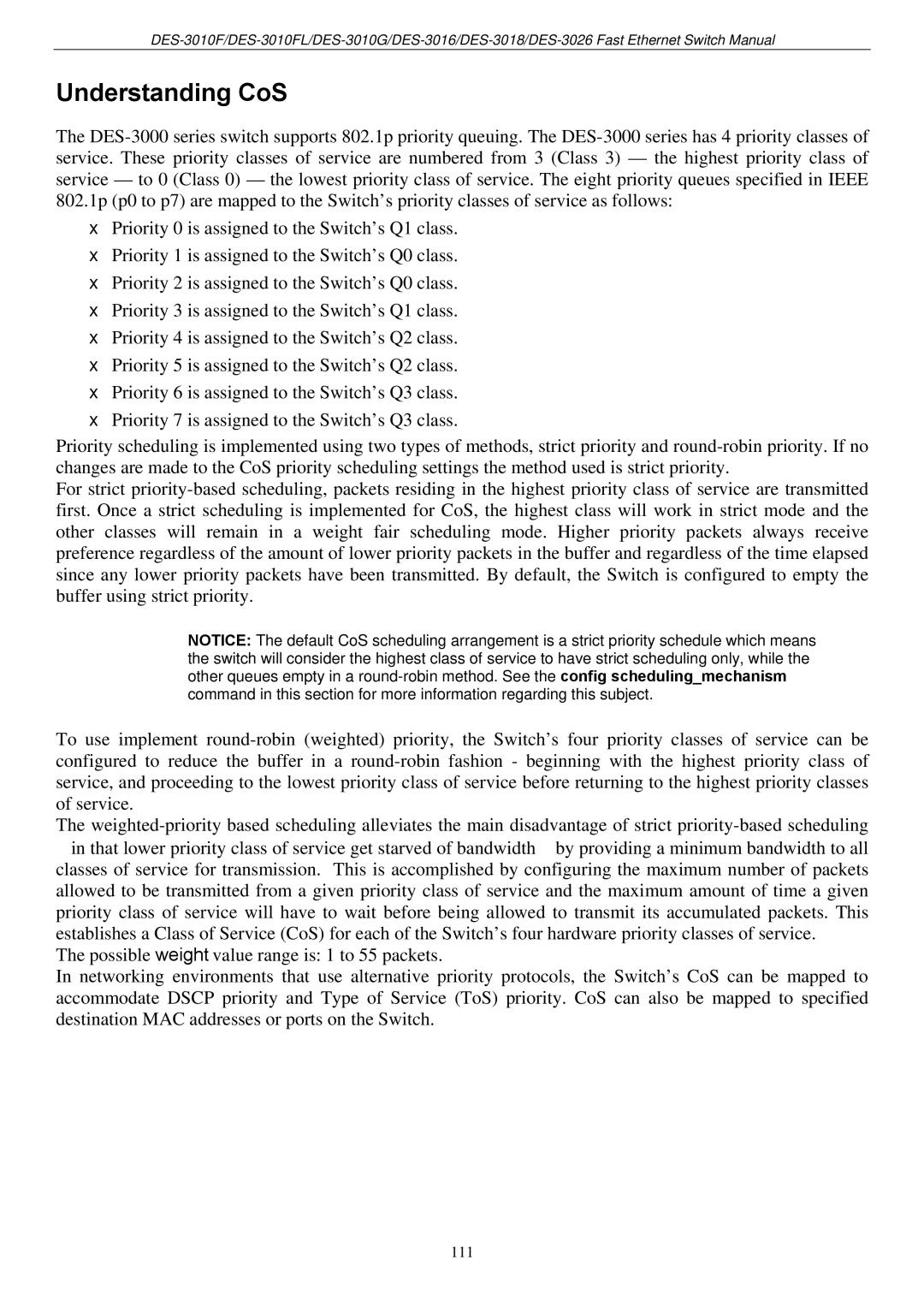
Understanding CoS
The
802.1p (p0 to p7) are mapped to the Switch’s priority classes of service as follows:
•Priority 0 is assigned to the Switch’s Q1 class.
•Priority 1 is assigned to the Switch’s Q0 class.
•Priority 2 is assigned to the Switch’s Q0 class.
•Priority 3 is assigned to the Switch’s Q1 class.
•Priority 4 is assigned to the Switch’s Q2 class.
•Priority 5 is assigned to the Switch’s Q2 class.
•Priority 6 is assigned to the Switch’s Q3 class.
•Priority 7 is assigned to the Switch’s Q3 class.
Priority scheduling is implemented using two types of methods, strict priority and
For strict
NOTICE: The default CoS scheduling arrangement is a strict priority schedule which means the switch will consider the highest class of service to have strict scheduling only, while the other queues empty in a
To use implement
The
−in that lower priority class of service get starved of bandwidth − by providing a minimum bandwidth to all classes of service for transmission. This is accomplished by configuring the maximum number of packets allowed to be transmitted from a given priority class of service and the maximum amount of time a given priority class of service will have to wait before being allowed to transmit its accumulated packets. This establishes a Class of Service (CoS) for each of the Switch’s four hardware priority classes of service.
The possible weight value range is: 1 to 55 packets.
In networking environments that use alternative priority protocols, the Switch’s CoS can be mapped to accommodate DSCP priority and Type of Service (ToS) priority. CoS can also be mapped to specified destination MAC addresses or ports on the Switch.
111
